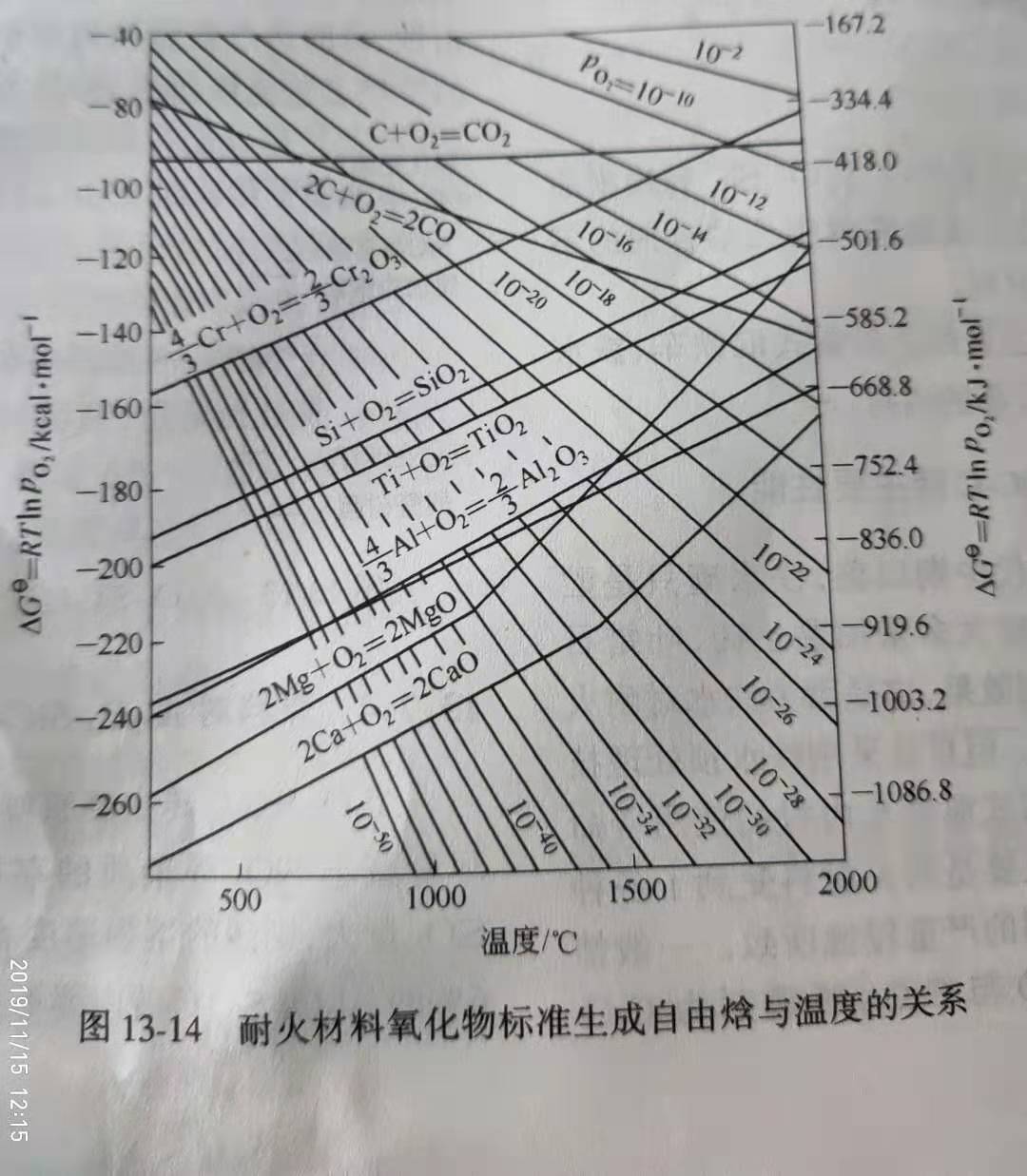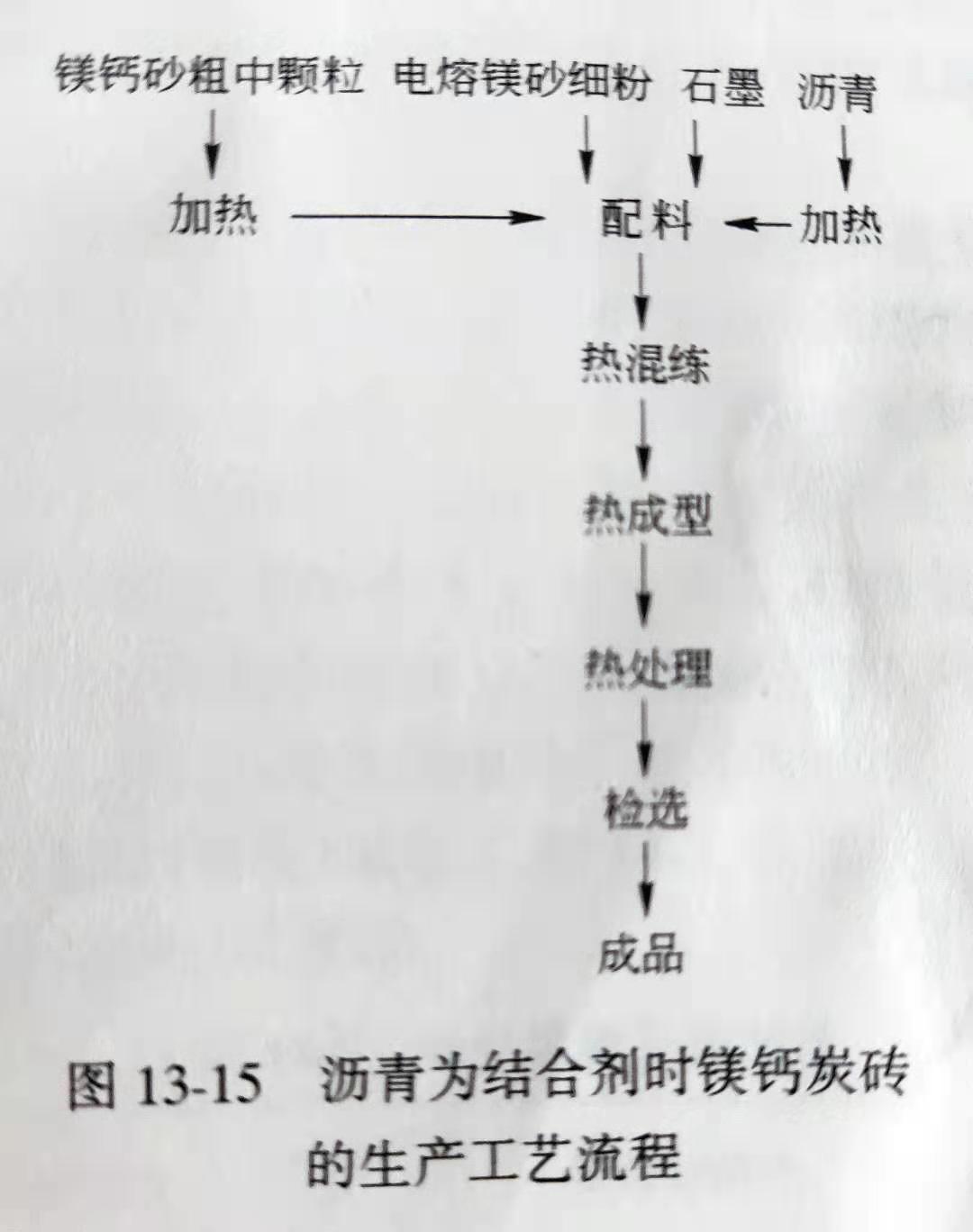Magnesia Calcium Carbon Brick
Mgo-ca-c brick is made of alkaline oxide magnesium oxide (melting point 2800℃) and calcium oxide (melting point 2570℃) with high melting point carbon material which is difficult to be infiltrated by slag as raw materials, adding various non-oxide additives and combining with anhydrous carbon binder.
As can be seen from figure 13-14, the co-existence temperature of CaO and C is the highest, and the carbon composite refractories containing CaO should have better performance.

However, the main reason why mgo-ca-c brick is not as widely used as mgo-c brick is that CaO is easy to hydrate and the production process is difficult to control. However, CaO has a unique chemical stability and the role of purifying molten steel, in the smelting of stainless steel, pure steel and low sulfur steel and other high quality steel field is increasingly paid attention to.
For example, the smelting of stainless steel is different from the smelting of ordinary steel. In the presence of low alkalinity (CaO/SiO2) slag, the refractory is exposed to high-temperature and long-term operating environment. Because low-alkalinity slag can improve the solubility of MgO, and it is easy to infiltrate into the grain boundary of magnesite, and promote the separation and dissolution of grains at the boundary, the use of mgo-c brick under such conditions will cause great damage to magnesia. In addition, due to high operating temperature, low CaO/SiO2 in slag and low total iron content, it is difficult to form a dense MgO layer near the working face, so MgO and C reaction is easy to be carried out in the brick, resulting in tissue deterioration. Therefore, during the smelting of stainless steel, the damage of mgo-c brick can be considered as a combination of the dissolution and dissolution of magnesia caused by slag and the tissue degradation caused by the oxidation of carbon caused by MgO, and the damage rate of brick increased significantly.
The mgo-ca-c brick has the following advantages to replace the mgo-c brick used in the above operation conditions and blowing method:
The CaO in the brick is dissolved in the slag, forming a slag layer with high melting point and high viscosity in the working face, which has the function of slag protection layer. Because CaO coexists with C more stably than MgO, there is less tissue deterioration due to internal reactions in bricks.
The raw materials containing free calcium oxide are: sintered dolomite, synthetic magnesium dolomite, electric melting dolomite, electric melting CaO clinker.
The microstructure of these materials varies with the content of free calcium oxide. If CaO is less than 10%, the aggregation of CaO cannot be clearly found under the microscope. Less than 10%. Less than 30%, the CaO crystal phase is surrounded by continuous calcareous calcareous phase. When CaO is greater than 30%, CaO (calcite) becomes a continuous crystal phase and calcite is surrounded by calcite crystal phase. Moreover, the electromelt material has a larger crystal size than the sinter material.
CaO and MgO are both basic refractory oxides, but their slag resistance is different. CaO has a strong resistance to acidic slag (SiO2). The reason is that CaO reacts with SiO2 to form C2S with high melting point and increases the alkalinity of slag close to the working surface of CaO, thereby improving the viscosity of slag and reducing the erosion effect of slag. Therefore, the corrosion resistance of mgo-ca-c brick to low-alkalinity slag is stronger than that of mgo-c brick. MgO is more resistant to iron slag than CaO.
In general converter smelting process, slag erosion of refractory materials can be divided into two stages, namely initial slag phase (acid slag, the main is SiO2) and the last stage of slag erosion (mainly Fe2O3, CaO), so for early slag, the presence of CaO can reduce slag erosion sex of brick, slows the penetration of slag, so general CaO is better than MgO style; For later slag, MgO is generally more resistant to erosion than CaO. If less iron oxide content in slag (less than 10%), MgO-CaO-C brick also has good slag resistance.
The production process of MgO-CaO-C brick varies with different binders. When asphalt is used as the binder of mgo-ca-c brick, its production process is shown in figure 13-15. When anhydrous phenolic was used as binder, the production process was the same as that of magnesia carbon brick.

Key points of mgo-ca-c brick production process:
(1) aggregate and matrix. In order to improve the hydration resistance of mgo-ca-c brick, the raw material containing free CaO is generally used as aggregate, and the matrix part is electrofused magnesia and graphite, which can improve the slag resistance and hydration resistance of the product.
(2) binder. Due to the ease of hydration, the binder used should contain as little as possible combined water or free water. Available binders are: coal pitch, petroleum heavy pitch, high carbon binder, anhydrous resin.
(3) amount of graphite added. It is better to determine the amount of graphite according to the actual use and operating conditions.
(4) for low CaO/SiO2 ratio and high total iron slag, the amount of graphite should not be too much. This is because in addition to CaO and iron oxide reaction to form low melting, iron oxide in slag and graphite reaction, so that the brick damage increased;
(5) for low CaO/SiO2 ratio and low total iron slag, the higher the amount of graphite added, the better the slag resistance of mgo-cao -C brick.
For high CaO/SiO2 ratio and high total iron slag, the increase of graphite content is beneficial to the reduction of melt loss.
(4) mixing and forming. When used with anhydrous resin and mgo-c brick the same;
When using asphalt as a binder, usually using hot mixing and hot molding, in order to improve the volume density of products, enhance the combination of carbon, on the pressed brick further after coking treatment with tar asphalt impregnation, can significantly improve the performance of products.
(5) mud preparation. The ratio of typical mgo-cao-c brick mortar is shown in table 13-26.
(6) brick surface treatment. For molding good brick, in order to prevent CaO hydration, and at the same time, in order to prevent slip, the general surface treatment, surface treatment agent for diluted anhydrous resin.
(7) heat treatment. The heat treatment of mgo-ca-c brick is the same as that of mgo-c brick.


